Knowledge Hub
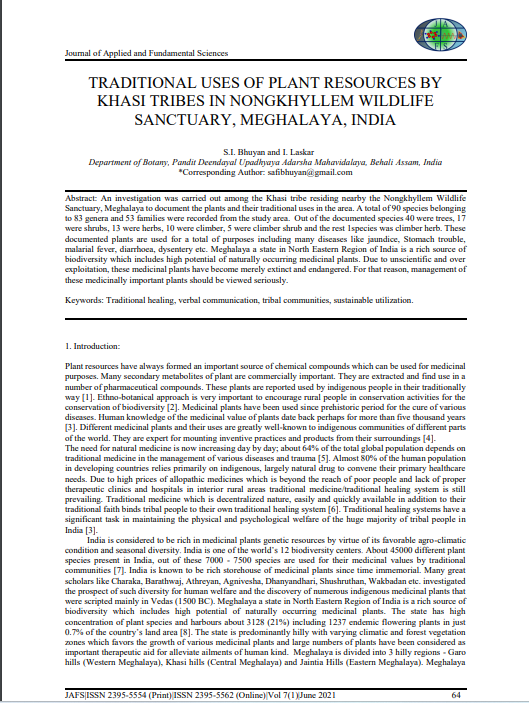
Traditional Uses of Plant Resources by Khasi Tribes in Nongkhyllem Wildlife Sanctuary, Meghalaya, India
2021
Author(s): Bhuyan S I, Laskar I
An investigation was carried out among the Khasi tribe residing nearby the Nongkhyllem Wildlife Sanctuary, Meghalaya to document the plants and their traditional uses in the area.

Traditional Healing Practices for Treatment of Animal Bites Among Tribes of India: A systematic review
2022
Author(s): Saxena N ,Singh S
The present work is an attempt to assemble information related to various plants and practices being used as traditional medicine for treating animal bites by the tribes of India. The review was undertaken by categorizing research articles focusing on tribes residing in different geographical zones of India (seven zones for the current purpose) and their treatment pattern involving usage of plants for various types of animal bites.
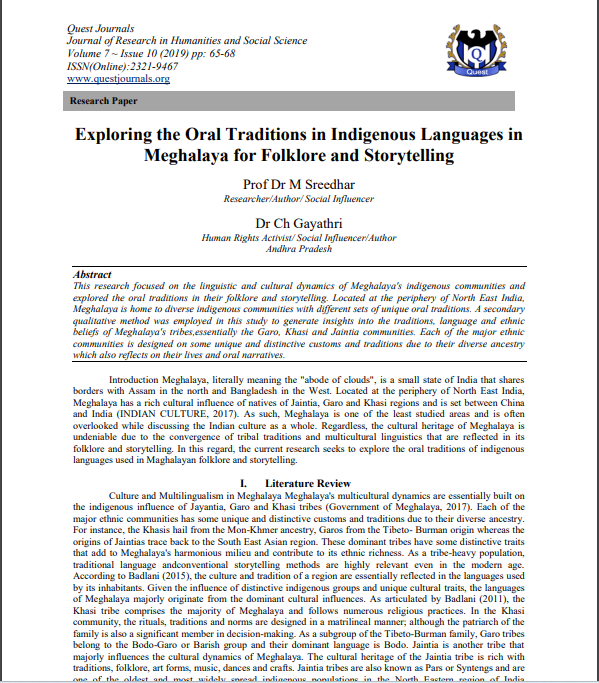
Exploring the Oral Traditions in Indigenous Languages in Meghalaya for Folklore and Storytelling
2019
Author(s): Sreedhar M , Gayathri C
Meghalaya has a rich cultural influence of natives of Jaintia, Garo and Khasi regions and is set between China and India (INDIAN CULTURE, 2017). As such, Meghalaya is one of the least studied areas and is often overlooked while discussing the Indian culture as a whole. Regardless, the cultural heritage of Meghalaya is undeniable due to the convergence of tribal traditions and multicultural linguistics that are reflected in its folklore and storytelling.
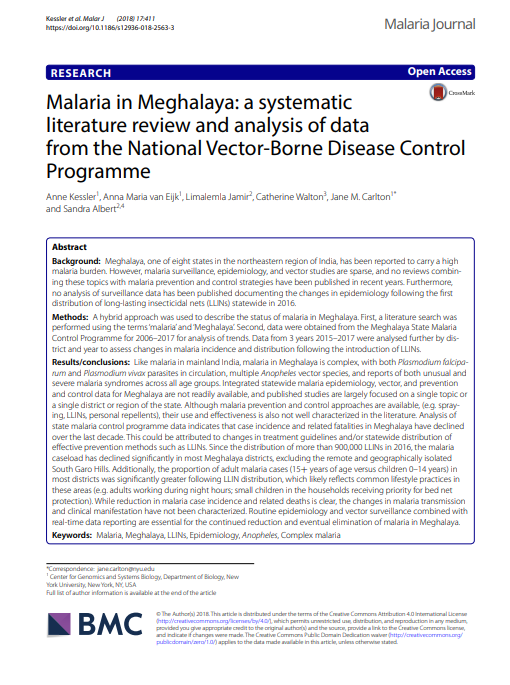
Malaria in Meghalaya: A Systematic Literature Review and Analysis of Data from the National Vector-Borne Disease Control Programme
2018
Author(s): Kessler A, Eijk AM, Jamir L, Walton C, Carlton JM
This study was carried out to undertake literature review of malaria in Meghalaya, with the goal of summarizing what is known about malaria epidemiology, vectors, and prevention methods in the state; and second, to undertake an analysis of statewide malaria epidemiology data from 2015-2017 to evaluate the effect of the introduction of LLINs.
Brazil - Indigenous Rights: Shoved out
2023
Author(s): International Collective in Support of Fishworkers (ICSF)
The present issue of Yemaya is a Special Issue on GAF8. It carries the gist of the discussions that took place over the three days of the conference in which 79 papers were presented on six thematic areas and which attracted 198 delegates from 26 countries.
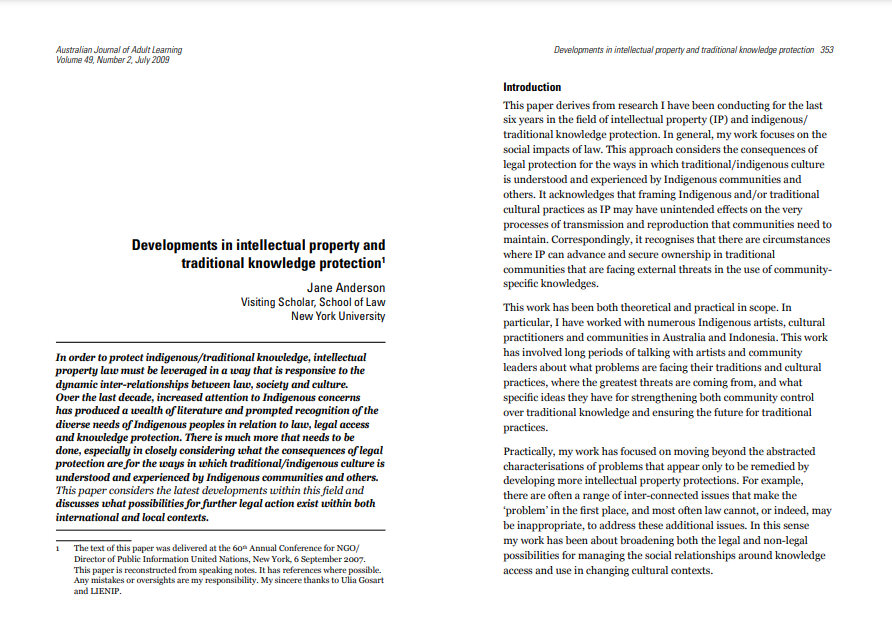
Developments in intellectual property and traditional knowledge protection
2009
Author(s): Anderson J
This paper derives from research that have been conducting for the last six years in the field of intellectual property (IP) and indigenous/ traditional knowledge protection. In general, the work focuses on the social impacts of law.
.jpg)
American Indian Quarterly has earned its reputation as one of the dominant journals in American Indian studies by presenting the best and most thought-provoking scholarship in the field. The journal is a forum for diverse voices and perspectives spanning a variety of academic disciplines.
Agricultural transformation in Africa: The role of natural resources
2017
Author(s): Food and Agriculture Organization of the United Nations
This article outlines how pulses could contribute towards agricultural transformation and the attainment of Sustainable Development Goals in Africa. A quarter of the African population, most of whom are smallholder farmers deriving their livelihoods from rain fed agriculture, live in hunger and poverty. African governments should, among other measures, take advantage of the 2016 International Year of Pulses (IYP), declared by the United Nations' Food and Agriculture Organization (FAO), to stimulate both domestic consumption and exports of pulses to address this challenge.

An Indigenous Academic Perspective to Preserving and Promoting Indigenous Knowledge and Traditions: A Fiji Case Study
2017
Author(s): Ali W
While maintaining the importance of preserving the originality of the Indigenous cultural identity and practices, the paper highlights how the infusion of the cultures of the Indigenous people and that of the Indo-Fijians, who have co-existed together for over 100 years, has shaped the unique multicultural landscape in Fiji.
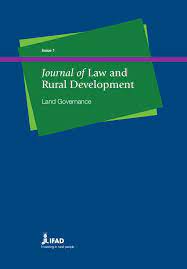
Journal of Law and Rural Development
2017
Publisher/Organisation: International Fund for Agricultural Development (IFAD)
The Journal of Law and Rural Development provides a forum where the link between law and rural development can be explored.



